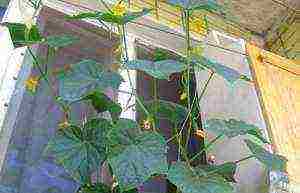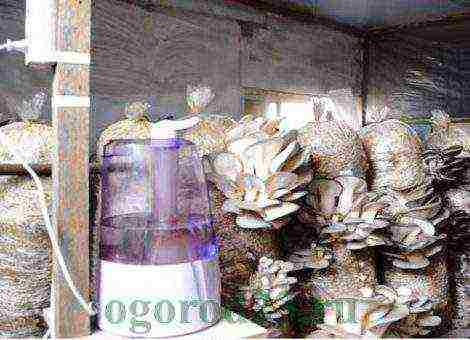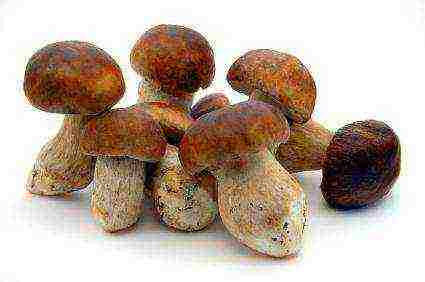Content
Despite the wide range of dry and artificial foods, there has long been a problem of feeding aquarium fish. But, no matter what they say, and no matter what they say about artificial food, living will be many times better and more useful for your pets. However, live food has one drawback - it needs to be obtained somewhere and stored under certain conditions. For instance, bloodworm and tubifex usually mined in polluted water bodies. And for this reason, experienced aquarists abandon live food in favor of dry and artificial food, thereby poisoning the fish habitat with unnecessary chemistry.
Unfortunately, these fears are not in vain. Indeed, in most cases, the bulk of diseases enter the aquarium with live food. Therefore, the obligatory procedure for disinfecting live food will come in handy. There are many methods of disinfection - from settling to soaking in special solutions. However, even the most effective method will not be able to neutralize all harmful bacteria. Difficulties with disinfection, as well as the existing likelihood of the penetration of harmful microorganisms and chemicals from suburban streams, stop hobbyists and professional aquarists from feeding live bloodworms.
Large aquarium farms have long abandoned the use of live food. And in European aquariums, they practically do not feed the harvested live food. But do not despair, there is a way out. It consists in the artificial cultivation of live food. Let's talk about this in detail.
Growing live food in artificial conditions
Commercial breeding of live food is an old dream of aquarists, but so far it is poorly realized in life. If we analyze a large number of sources, it becomes clear that only a few are still doing this. Although, the prospect is very great. In some countries, you can find farms where live feed is grown all year round. These enterprises have high profitability, as this product is in high demand.
It should be recognized that the cultivation of bloodworms at any scale is a difficult process. Bloodworms are mosquito larvae. Breeding it requires a breeding stock, which means that there will be a large accumulation of mosquitoes in the breeding site. From this we can conclude that bloodworms are not suitable for breeding.
Now consider pipe maker... It is a small-bristled worm of the Tubificidae family.
Pipe worker able to create year-round colonies. It feeds on organic matter. Many may argue that the tubifex contains nothing but protein, but it can be “pumped up” with fortified feed.
Breeding the tubule requires creativity in the process. Many have developed their own breeding technology, but do not want to share it, they are trying to sell their technology. And someone has already tried to breed at home, but got burned.
In printed publications, you can only find information that growing a tubifex is laborious and ineffective. One can agree with this, but any difficulties can be overcome! And we will try to find a solution.
Breeding the tubule
Many aquarists are inclined to believe that the tubifex must be grown in running water... But you can also find information that the tubifex must be kept in stagnant water. This is most likely wrong. Indeed, in nature, the pipe maker can be found in rivers, in flowing waters. Such waters bring new food to the worm, and oxygen enrichment of the reservoir also occurs, which has a positive effect on the colonies of the tubifex.
These worms live in swampy rivers and serve as an indicator of the pollution of the reservoir.They are buried in the silt, but not completely, the upper part wriggling above the bottom surface. The upper body absorbs oxygen from the water. On the shelves of specialized stores, you can find price tags with the name "Pipe". But do not delude yourself, in one package there may be other worms living next door to the tubule. This is another reason to breed it in artificial conditions.
Therefore, it is necessary to create for our worms the most similar conditions under which the water would be constantly in motion. Based on this, the reservoir should be rectangular, elongated, and the bottom is insulated from the main soil with concrete or film. The bottom should be sloped, this will allow the water to move by gravity. There should not be too much water, no more than 10 cm deep. The length is calculated from the number of tubifex colonies, approximately 3-5 meters.
Water
As for the water ... It must constantly circulate in the reservoir, just circulate, and not flow from the tap. This principle is comparable to fountains, i.e. the pump distills the same water from bottom to top. To avoid acidification of water, it must be changed periodically. A positive result is observed with the addition of vitamins and food for worms to the water.
The temperature in the reservoir should be constant and be 5-10 degrees Celsius... In summer, the reservoir is covered with an awning or placed in the shade, and in winter, complete freezing of water is unacceptable.
Nutrient substrate for the tubifex
We pass to the main thing, to the substrate for the worms. Under natural conditions, the tubifex lives at the bottom, in the silt. Therefore, it is recommended to use silt from the bottom of the rivers for breeding. Before using it, it must be rinsed out. Sludge is dried and disinfected under an ultraviolet lamp. Then evenly spread over the bottom. It is not recommended to make a layer of silt less than five centimeters.
You can find tips for feeding the tubifex with humus, manure. This greatly simplifies the rearing process, but there is a risk of introducing harmful microorganisms into the food for the worms. It is worth looking for optimal solutions and understanding the risk of such feeding, but definitely the feed should be organic.
As we remember, organic matter serves as food. Even bread, dry fish food can be used in this capacity. In order for the pipe maker to digest this, you need to mix the feed with silt or sprinkle it on the bottom in a thin layer. Do not overdo it with food. It is necessary to achieve a minimum of its presence in the reservoir. It is recommended to feed once every one or two weeks. By the way, many aquarists note that the presence of a small amount of tubule in the aquarium promotes better plant growth. This is due to the fact that worms process organic matter into lighter particles that are easier for plants to assimilate.
It is very important for anyone with an aquarium to have constant and uninterrupted access to live food for aquarium fish throughout the year, regardless of the season.

Photo of a pipe maker
Such provision can be obtained by breeding a tubifex at home. Many people think that breeding this worm on their own, and even at home, is a thankless and economically unprofitable occupation. This is not entirely true.
In nature, this small-bristled worm leads a near-bottom life in reservoirs with a muddy bottom and a large amount of organic matter that gets into the water. Feeding on decaying organic matter, it can grow up to 10 cm in length, which is quite impressive compared to the bloodworm, which is very popular with aquarium lovers. The tubifex received a red or dark pink color from a large amount of hemoglobin contained in its blood, therefore, as food for fish, it is not only nutritious, but also useful.
Under suitable living conditions, these worms form entire colonies, which greatly facilitates the process of breeding the tubifex.
Breeding technology
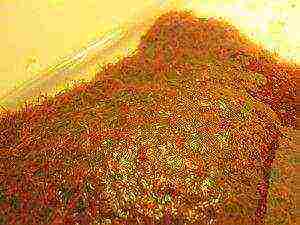 Despite the fact that the purchased pipe maker can be stored alive for up to 2 months (if you keep it in the refrigerator, in a container with a little water), it is still better to place it in such conditions in which it can not only retain its original qualities, but also grow and multiply.
Despite the fact that the purchased pipe maker can be stored alive for up to 2 months (if you keep it in the refrigerator, in a container with a little water), it is still better to place it in such conditions in which it can not only retain its original qualities, but also grow and multiply.
For the successful breeding of these worms, it is necessary to prepare a special substrate in which it will live, feed and reproduce. Ideally, you can take ready-made bottom silt from a suitable reservoir. But along with it, you can get a large list of problems associated with the ecological cleanliness of the place where it was taken from. In addition, such a basis can bring in a lot of microbes, which simply does not make sense to fight.
Therefore, it is better to dwell on the option of your own cooking.
The main ingredients are garden soil, ground into dry moss and a decoction of wheat and rice.
It is done quickly enough. In half a liter of milk, boil for 20 minutes, poured into it in a teaspoon, wheat and rice. After that, such a broth is placed in a warm place, for several days, for the formation of bacteria in it, which will become food for tubulers.

Daphnia. The pipe worker.
After a sufficient number of microorganisms have formed, a glass of garden soil and a culture of tubule makers are added to a half-liter volume of broth.
This preparation allows it to multiply quickly, and the nutrients are sufficient for almost a month's breeding. During this time, the number of worms will increase significantly, and they can be used for their intended purpose, i.e. feed to fish living in the aquarium.
How to get (wash) bloodworms
Precautionary measures
For humans, the pipe maker is completely harmless. But aeromonad bacteria, which cause infectious diseases in fish, dropsy or ruffling of scales, are very easy to bring along with worms.
To keep your aquarium pets safe, there is a simple procedure to follow before starting the breeding process.
After acquiring a tubule, it is kept in water at room temperature for several days, regularly changing the water as it becomes contaminated with secretions from worms. Purification, therefore, continues until formations in color and density, reminiscent of river silt, no longer appear.
Cleaning methods
Before feeding the tubifex to the fish, you need to clean it. This applies to all worms, regardless of their previous habitat, be it a muddy reservoir or a plastic container with a special substrate.
There are several methods:
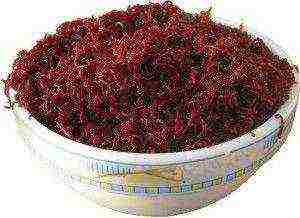 thick starch is poured into a bucket with a tubule. After that, a dense layer of worms forms at the top, under it is a layer of starch, and at the very bottom is all the dirt;
thick starch is poured into a bucket with a tubule. After that, a dense layer of worms forms at the top, under it is a layer of starch, and at the very bottom is all the dirt;- tubulers are tightly wrapped with gauze or mesh nylon (stocking) and the ends are tied. After placing such a bag in a container with a small layer of water, they begin to pour hot water over it. Fleeing from it, the worms will actively crawl through small cells and cleanse themselves on their own;
- a jar of worms is tied with gauze and put in hot water. Due to the extremely uncomfortable temperature, the worms will crawl out through the gauze to the surface, where they can be collected already peeled;
- the container with the tubule is hermetically closed, cutting off the access of oxygen. After such exposure, a dense lump of worms forms on the surface, from where they are easy to pick up.
a small amount of kefir is added to a container with tubules, but without water. Eating it, the worms perfectly self-cleanse in a short time.
And a little about secrets ...
Have you ever experienced unbearable joint pain? And you know firsthand what it is:
- inability to move easily and comfortably;
- discomfort when going up and down stairs;
- unpleasant crunching, clicking not on their own;
- pain during or after exercise;
- joint inflammation and swelling;
- unreasonable and sometimes unbearable aching pain in the joints ...
Now answer the question: does this suit you? How can you endure such pain? And how much money have you already "poured" on ineffective treatment? That's right - it's time to end it! Do you agree? That is why we decided to publish an exclusive interview with Professor Dikul, in which he revealed the secrets of getting rid of joint pain, arthritis and arthrosis.
Read the interview ...
Video - FLUSHING AND STORING THE PIPE
Those who are seriously involved in the breeding and sale of aquarium fish know that the lion's share of the selling price for this product (approximately 35%) comes from the cost of purchasing quality food. The tubifex is considered to be one of the best feeds. Firstly, it is versatile, suitable for both adults and for growing fry. Secondly, it is very nutritious (it is in no way inferior to bloodworms). And thirdly, it stimulates the reproduction of aquarium fish. The demand for it is traditionally high, and the price “bites”. Here is a ready-made business idea with a small investment - growing a pipe maker at home.

First, we will prepare a mini-farm where our pets will live. It is a cascade of several plastic containers filled with water and connected by tubes, representing an artificial stream. To accommodate 2 kg of worms according to this principle, 10 containers with dimensions of 100x30x20 cm are enough. At the bottom we put a small (within 2 cm) layer of expanded clay, and on top - a substrate consisting of silt (lake or river is suitable), sand and banana or vegetable peel (potatoes, carrots). Do not forget to disinfect sand and silt by boiling them separately. We put a layer of sand (4-5 cm), on it - a peel, and on top, sprinkle with silt (4-5 cm). Remember, the presence of a flow and a sufficient oxygen content in the water are indispensable conditions for the life of worms. Therefore, you need a compressor and a small pump. The water level itself should not exceed 20 cm, and the temperature is 30 degrees. (preferably room). Low to moderate lighting.

Having created comfortable conditions, we go in search of guests. Favorite habitats of the tubifex are sandy-silty soils, mixed with fallen leaves, shaded, cool areas of rivers and lakes. For example, knowing the location, you can use a scoop to collect part of the bottom soil (usually, it does not deepen more than 5 cm). Then, either rinse it under running water, or place the soil in a container, cover with gauze and put on fire. Fleeing from the high temperature, the worms will crawl out onto cheesecloth, with which they are easy to collect. On average, from one kilogram of mined soil, you can get from 10% to 20% of the pipe maker, the rest is garbage.
We populate our nursery. A few words about feeding. In nutrition, the worm is unpretentious. You can use dry horse (cow) manure, fish meal and porridge. It processes well the cleaning of vegetables, fruits (I like watermelon peels). For example, horse manure is placed in a thin layer on the bottom and added in small portions after 3 - 4 days, as it is processed. Under favorable conditions, the tubifex readily reproduces. When the pink mass covers the bottom of the container in an almost continuous swaying carpet, it's time to harvest.
We are dealing with a rather gluttonous creature. In just one day, he passes through himself an amount of sludge that is 4 - 5 times its own weight! The tubule lover passes through itself the smallest suspensions and substances dissolved in water, it can be easily disinfected, and, at the same time, healed fish. And since there is a lot of protein in the tubule, and vitamins and other nutrients are not enough, it is advisable to add various microelements and vitamins to its feed. This will have a very beneficial effect on the health of fry and adult fish.
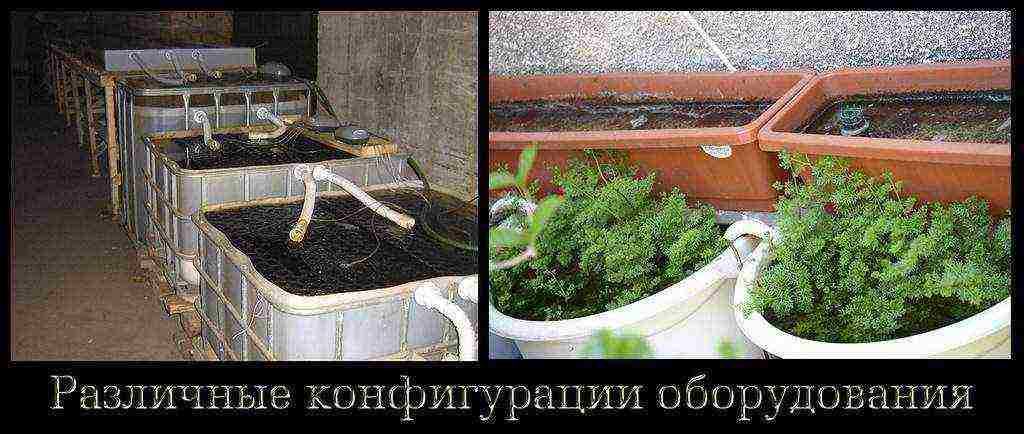
You can store the pipe maker in any container, following a number of simple recommendations. Firstly, the water temperature should not exceed 5 - 10 degrees. This can be a refrigerator, basement, balcony. Secondly, a fairly small volume of water is sufficient (a few centimeters from the ball of worms to the surface).Thirdly, you need to change the water often (at least 2 times a day), since it lives in running water and, in its absence, quickly begins to pollute the environment. Sometimes the tubule is frozen. But, due to the very thin and delicate structure, the quality of such feed is, for the most part, unsatisfactory.
Selling a fresh tubule is no problem. The most profitable way is retail. One point in the central market of the city allows you to sell several kilograms of pipe maker over the weekend. It is advisable to sell the surplus to pet stores that sell fish, or leave it for sale in the same stores. But the ideal selling option can be considered the development of a network of regular customers, consumers, both amateurs and professionals, who breed aquarium fish for sale. The main thing is the stable quality of the product: to carry out disinfection before sale, to supply only fresh and live product, always remember that the life and health of your customers' pets depends on the quality of the product, often costing several hundred dollars each. Carelessness in such a relationship is unacceptable. Constantly expanding the draw areas, over time you can reach a fairly decent level, which will provide you with a decent income.
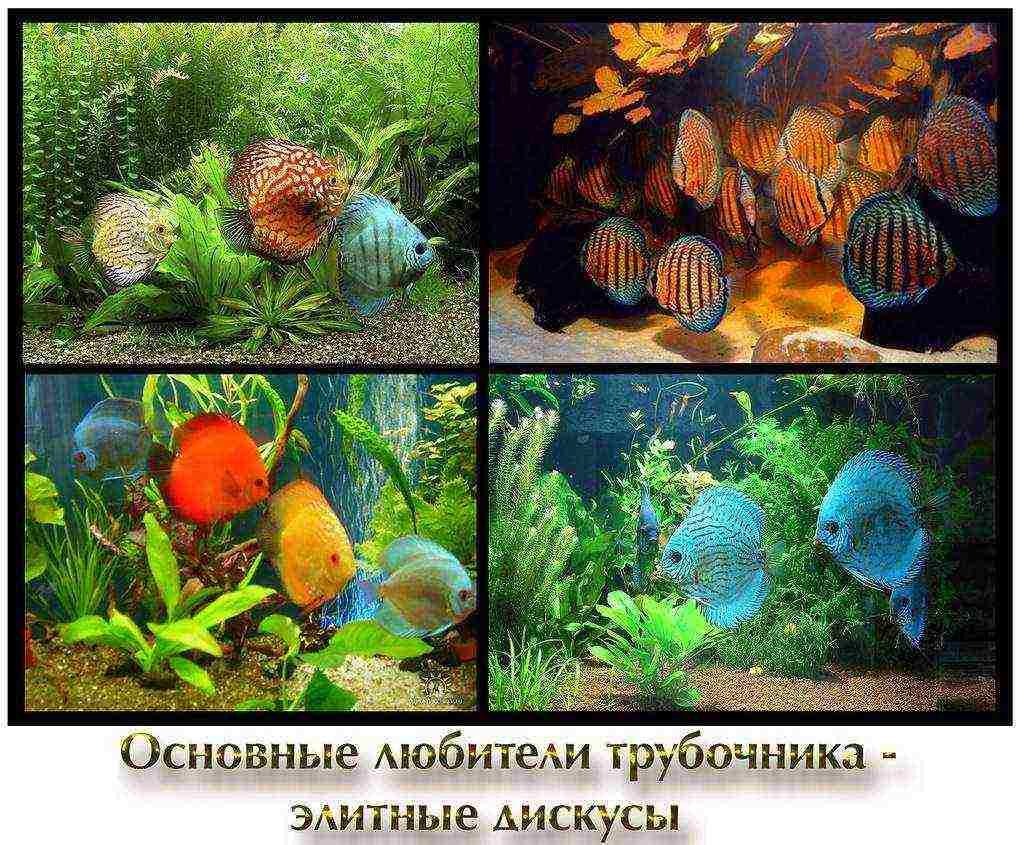
|
Visitor 1 14 years old |
|
|
The idea came to keep the pipe worker at home, so as not to infect with the pipe worker from the reservoirs. Is it possible? Tell me where you can get information. |
|
|
2004-05-1919/05/2004 12:50:14 |
| 2 2 years |
|
|
O! More bloodworms, crickets, and a corridor! I heard there is a pipe maker in the sewers ... |
|
|
2004-05-1919/05/2004 15:53:49 |
|
Of course, if you create a whole fish farm, then you can breed food, and so, for the house, for the family - you should not bother |
|
|
2004-05-1919/05/2004 16:15:38 |
|
try to give the VIAGRA to the trumpeter. You will still sell. " But to whom the domestic pipe-maker is disinfected in the heat of the heat " I'm joking good-naturedly. |
|
|
2004-05-1919/05/2004 17:05:54 |
|
Visitor 1 1 year |
|
|
I heard about one uncle, an aquarist, apparently crazy. So he kept bloodworms and bred them in the bathroom. ? And how did he wash? |
|
|
2004-05-1919/05/2004 17:27:10 |
|
625 |
|
|
Hehhe Imagine what a vanischccchcha at home buit Gee |
|
| 2004-05-20
20/05/2004 08:13:22 #103939 |
| 2 5 years old |
|
|
The pipe worker prefers rather dirty bodies of water. At home, it is unlikely, because you need a fairly large volume of water, but if you dig a tank into the ground at the dacha, it should work out. |
|
|
2004-05-2020/05/2004 08:29:23 |
|
Visitor 4 10 years |
|
|
Will not work. Even at the dacha it may not work. At our dachas, a nutcase tried to grow worms in a fire pond. He put all sorts of slops on him, threw a terrible stench. And nothing came of it. But then from the dacha partnership he then got a big scolding. I myself while prowling around the city in search of this rubbish. |
|
|
2004-05-2020/05/2004 09:56:34 |
|
Visitor 1 14 years old |
|
|
It's good for you, my friends, to "joke without malice" and to scoff when in your area you can get any feed and additives in civilized stores or at the poultry market. And in our backwoods, except for unidentified black granules and ice cream daphnia, you can not buy anything. And I want to feed the fish normally. You can, of course, climb through the swamps, and I barely cured my fish, I would not want to introduce a new infection. |
|
|
2004-05-2121/05/2004 09:42:32 |
| 3 8 years old |
|
|
Yes, feed the sea fish and all the things you have in abundance, and the earthworm will be better than the pipe maker. |
|
|
2004-05-2121/05/2004 11:10:31 |
| 2 5 years old |
|
|
Try to take a net with a large area, put it in the sea on the grass for half an hour, you must definitely collect shrimp. I don't know how in Batumi with mussels, but it can go well as a top dressing. Constantly not needed, too much iodine. |
|
|
2004-05-2121/05/2004 13:48:07 |
|
Visitor 13 years |
|
|
Instead of a pipe maker, I would recommend Grindal worms and White worms. Much softer for the fish stomach and much more nutritious (I can provide links). Grindal - small fish, White - large. In general, I feed Grindals to everyone - both large and small. I have been breeding worms for the 2nd year. Boxes of 30x30x10 cm are enough for me to maintain the population of worms and feed the fish in 3 aquariums every other day. It is very simple to breed them, they do not take up a large volume, there is no smell. Here are some links about breeding. There is a lot of information on the Internet. If you don’t read English, write to me, I’ll tell you in detail.Starter culture, in Russia, can probably be ordered by mail (not sure). Oh, here's another. My worms live without earth at all, but in a dishwashing sponge. It is extremely convenient to care for. |
|
|
2004-05-2121/05/2004 21:42:08 |
|
Visitor 1 14 years old |
|
|
Thanks for the information! I dug something on the Internet on the grindal, and I will slip articles in English to my wife.
Can you detail this technology? Thanks in advance. |
|
|
2004-05-2424/05/2004 11:38:13 |
|
Visitor 13 years |
|
|
You can try these searches on google: grindal worms sponge grindal worms foam I take two or three large-porous sponges measuring 20x20x1 cm I wet it, squeeze it well, put it on top of each other and in a plastic box. I put the worms on top and sprinkle the baby porridge from the bag with a very thin layer (I don't remember the name, I can see it if necessary, or you can find it on the Internet). In this case, the cereal flakes must remain dry, otherwise they quickly deteriorate. You need to pour so much porridge so that the worms eat it in a day. On top of the worms and porridge I put a piece of glass or plexiglass measuring 15x15 cm to cover all the porridge. This helps to collect worms and keeps the crop from flies. I close the plastic box. Everything. A day later, I lift the glass, collect worms from it with my finger and "slip" my finger in the aquarium. Pisces are happy. You can not immediately shove the worms into the aquarium (I do this out of laziness), but rinse your finger in a glass of water, let the worms fall to the bottom (5 minutes), drain the dregs, and feed the worms to the fish. Then again I sprinkle the flakes of baby porridge and cover it with glass. Waiting for another 24 hours. Once every two or three days, I take out the sponges and rinse the plastic box (not the sponges). I do not wipe the drops of water remaining in the box after washing, but immediately put the sponges on top in the box. These drops are enough to maintain moisture. On the Internet, it is advised to pour a little water into the box, the sponge will absorb it. But at the same time, my worms quickly deteriorated. I think it depends on the ability of a particular sponge to absorb water. That seems to be all the wisdom. I want to warn you - do not overdose porridge. Start small and work your way up. Good luck! |
|
|
2004-05-2626/05/2004 03:21:47 |
|
Malok 14 years old |
|
|
but I don’t like the pipe maker as fodder. I know that there is a lot of protein in it, but ... The fish take it all over the aquarium, it immediately into small parts and into the ground, and then at the end of the week you have to siphon and remove 40% of the pipe maker fed to the fish ... So far, I do not see any better alternatives than a large bloodworm. I'm afraid to feed dry food - I'm afraid to turn the aquarium into rotten meat. |
|
|
2004-05-2626/05/2004 21:16:12 |
|
Visitor 13 years |
|
|
Why a pipe maker? Better bloodworms. In a large open container, collect rainwater (you can simple), add leaves and a little humus, at t> 25C will appear in 7-15 days - take a net, catch and feed fresh meat every day. |
|
|
2004-06-0908/06/2004 23:24:18 |
|
Advisor 366 3 years |
|
|
It will be great to put a barrel of rainwater, humus and leaves near the computer, right in the office of the native agency ! And every day in it with a net in front of visitors to play around for live (!) Red stinking worms But seriously, this method is probably not suitable for everyone. … |
|
| 2004-06-10
10/06/2004 10:52:06 #109392 |
| 1 8 years old |
|
|
Here's what I found interesting about the pipe maker: Tubules (Tubificidal) are small-bristled worms (Oligochaeta). T. tubifex is widespread in our country. Body length from 20 to 100 mm. This is a benthic animal, especially common in bodies of water with a muddy bottom. The pink or red color of the tubule is due to the presence of hemoglobin in the blood. Can withstand very severe contamination with a minimum amount of oxygen dissolved in the water. The tubifex is one of the most valuable and convenient food for aquarium fish. In terms of nutritional value, it almost does not differ from bloodworms. Tubifex can be obtained in natural reservoirs, it can be bred in natural reservoirs, using spoiled fruits, undercooked potatoes and corn cobs for this, or it is possible to breed tubifex artificially at home. For cultivation of the tubifex, a substrate is prepared: 2.5-5 cm3 of garden soil is mixed with powdered dry moss, which is watered with a decoction of wheat and rice. To prepare the broth, take 1/2 teaspoon of wheat and the same amount of rice. It should be boiled for 20 minutes in 0.5 liters of milk. The substrate is placed for two days in a warm place where bacteria develop, which the tubifex feeds on. After two days, 15–20 cm3 of soil and tubifex culture are added to it. Temperature 20 ° С, moderate lighting. The water should be changed once a week. Cooked food for the pipe maker is enough for 3-4 weeks. The tubifex reproduces rapidly. |
|
|
2004-07-2121/07/2004 22:43:36 |
| 1 8 years old |
|
|
Here's more about the pipe maker: Some store worms (and even breed them) in containers with water at a temperature of about 15 degrees, coarse sand is placed on the bottom of the container. Almost any organic matter serves as food for worms - a small amount of bread, dry food for fish, etc. The food should be placed on the bottom, or buried in the sand. You should feed so that only a small amount of rotting organic matter is present in the container - about once every two weeks. Interestingly, some aquarists note that the presence of worms in an aquarium with plants (in case they were not eaten immediately) improves the growth of plants with a developed root system, since the worms process organic matter into smaller components. |
|
|
2004-07-2424/07/2004 19:55:14 |
|
Advisor |
|
I wish I could see a 10cm long pipe maker! |
|
|
2004-07-2525/07/2004 21:10:52 |
| 1 8 years old |
|
heh heh heh. I would like to too |
|
|
2004-07-2525/07/2004 21:24:28 |
|
Visitor 12 years old |
|
|
Oleg Eremenko Can you please tell me what size the fry should have in order to be given the Grindal worm? Is it possible only to feed the fry exclusively to them? How much weight of Grindal worms did you manage to collect from one box. |
|
|
2004-07-2828/07/2004 12:49:59 |
|
Visitor 13 years |
|
|
Hi Igor! Can you please tell me what size the fry should have in order to be given the Grindal worm? What are your fry? It is too early to feed the fry that have just hatched from the eggs. In my experience, small fish fry can be fed from 4-5 weeks. Fry of large and / or fast-growing fish can be fed from 3-4 weeks of age. Viviparous, probably from a week of age. From birth I feed the spawners with microworms, some also with ciliates. Is it possible only to feed the fry exclusively to them? I feed the fry, which is already taking the grindal, with both the grindale and dry food. Dry food, as a rule, contains trace elements necessary for fish. How much weight of Grindal worms did you manage to collect from one box. I will not say by weight. By volume, approximately 1-3 ml daily from one carton. |
|
|
2004-07-2929/07/2004 09:04:40 |
|
Visitor 12 years old |
|
|
Hello Oleg! thanks for the help I have goldfish fry now. From the larva up to 3 weeks, he fed them with the moina culture. Then they began to miss the feed - they switched to compound feed. This is where my problems began. On one compound feed, the fry do not grow, they don’t want to eat on the other, and on the third they began to die. I had to cook minced meat for them, one bad muddy lot. So I think he can pick up some kind of living culture for them. Have you tried feeding the fry of goldfish with Grindal eels? |
|
|
2004-07-2929/07/2004 13:04:49 |
|
Visitor 13 years |
|
|
Have you tried feeding the fry of goldfish with Grindal eels? |
|
|
2004-07-2929/07/2004 20:32:07 |
